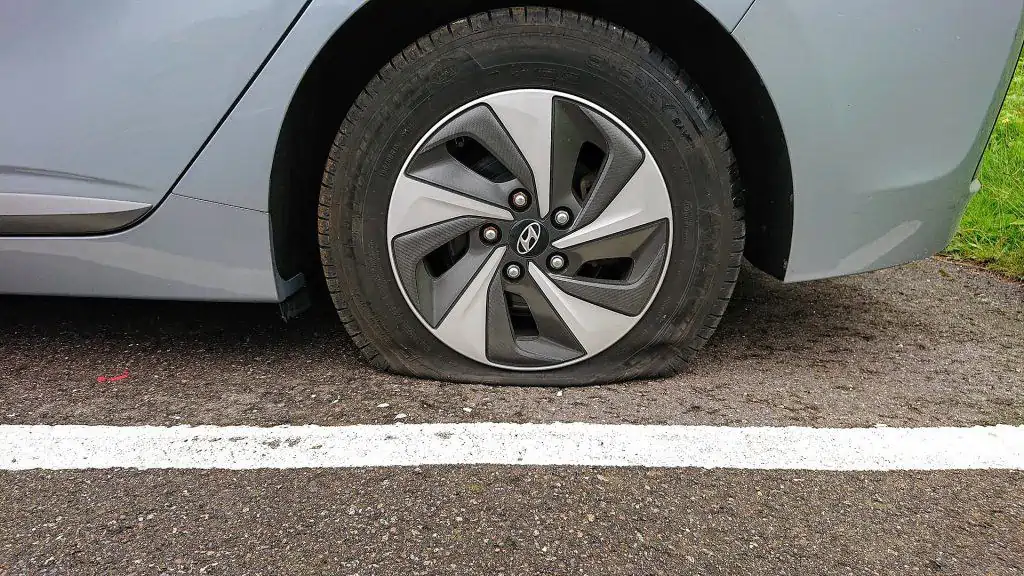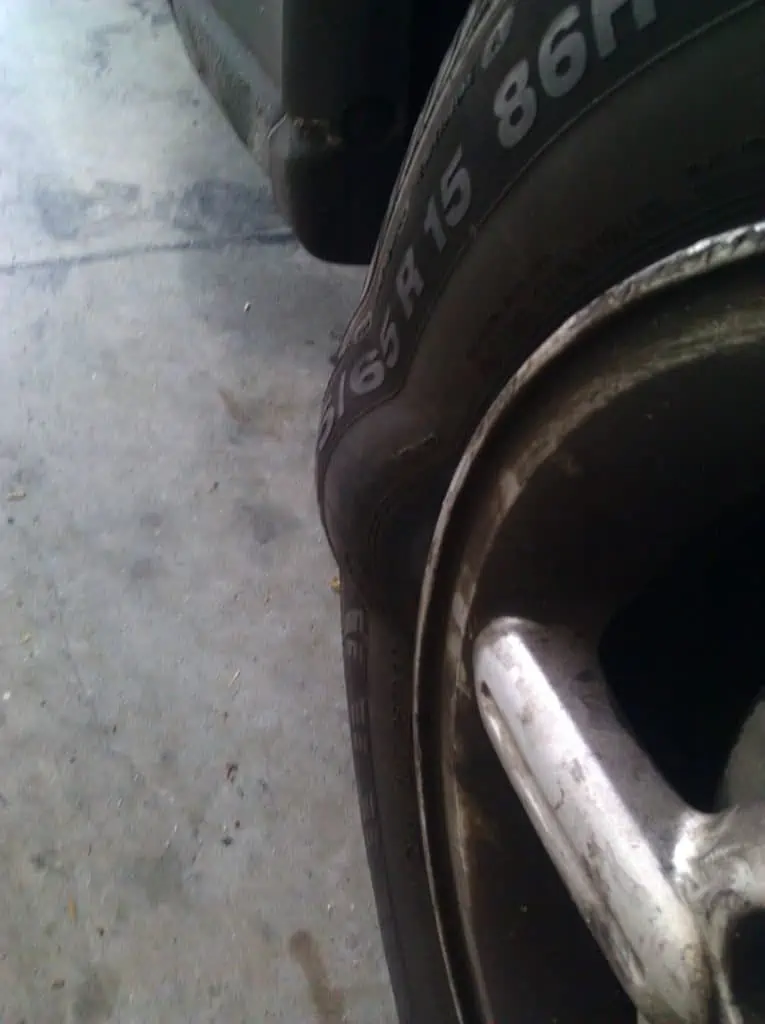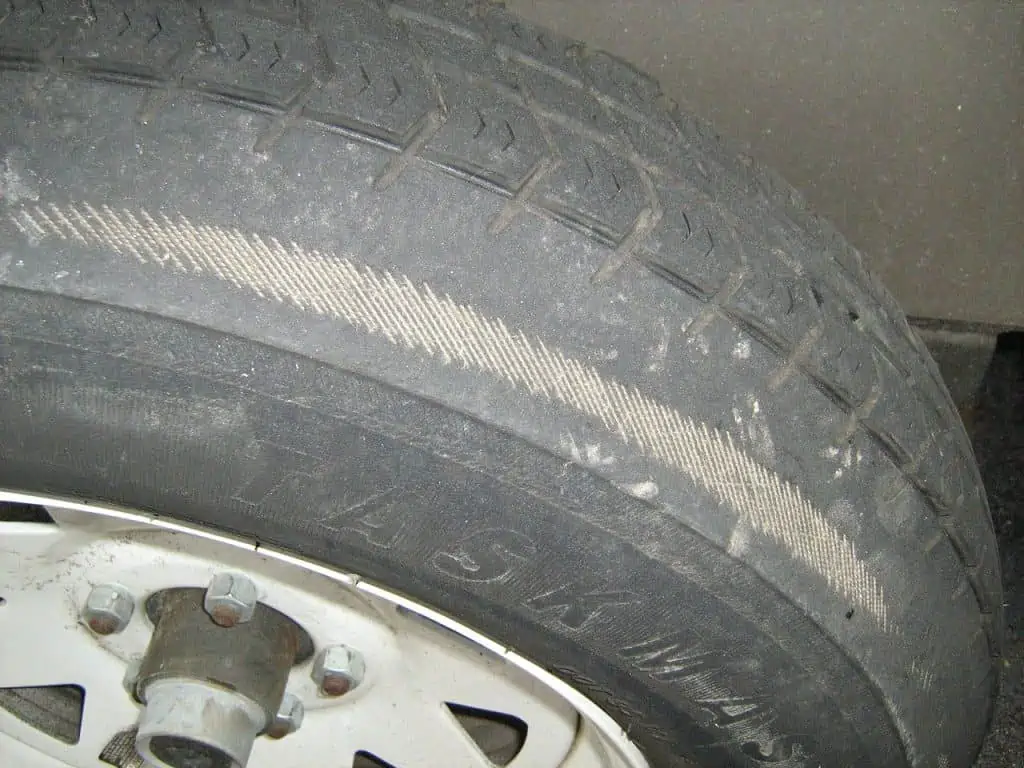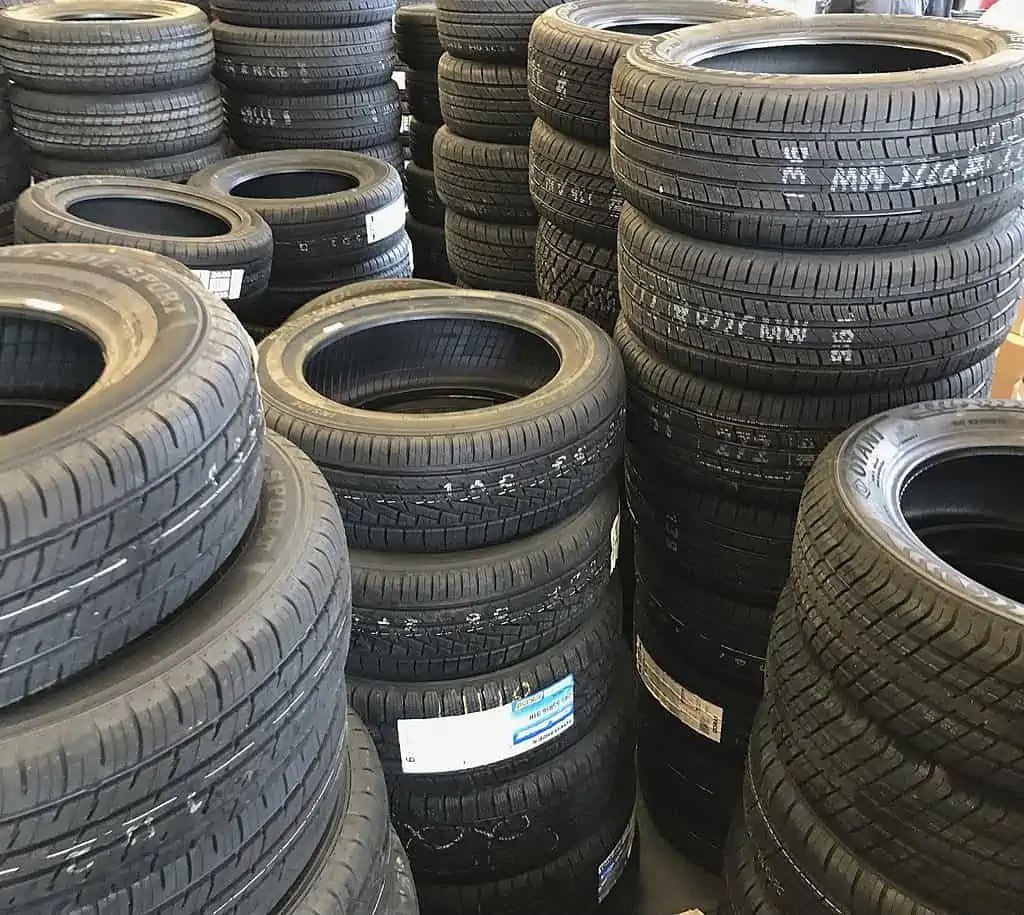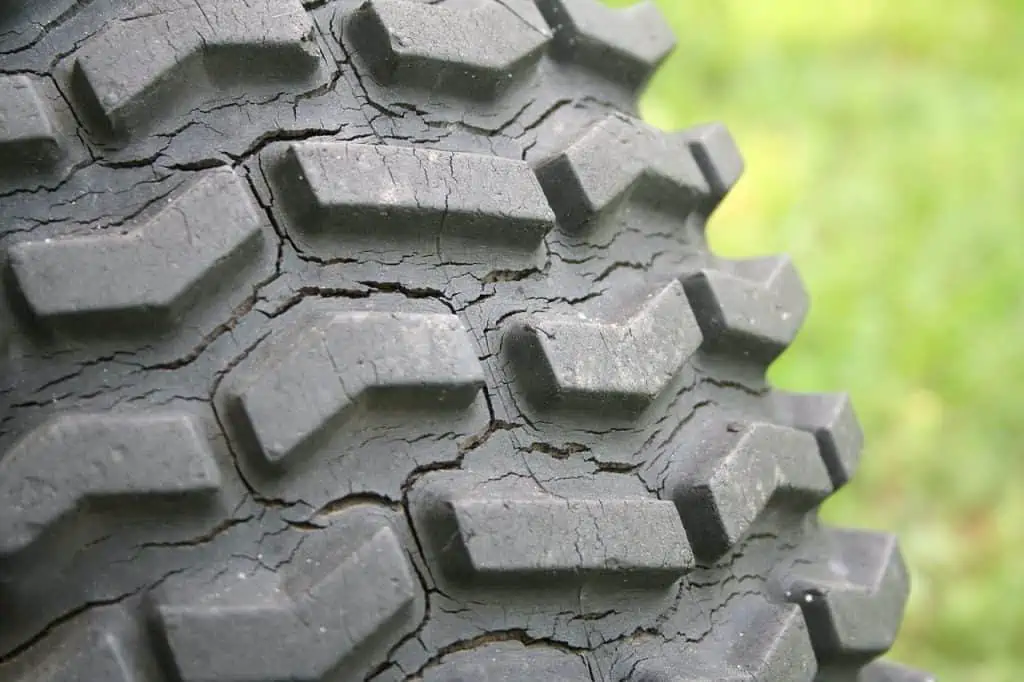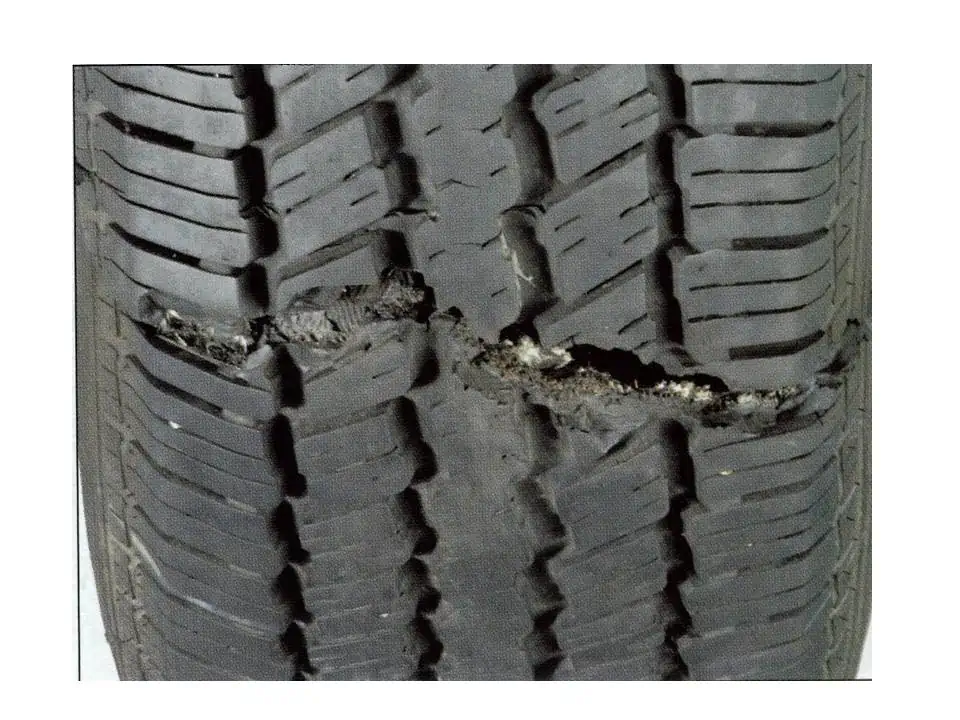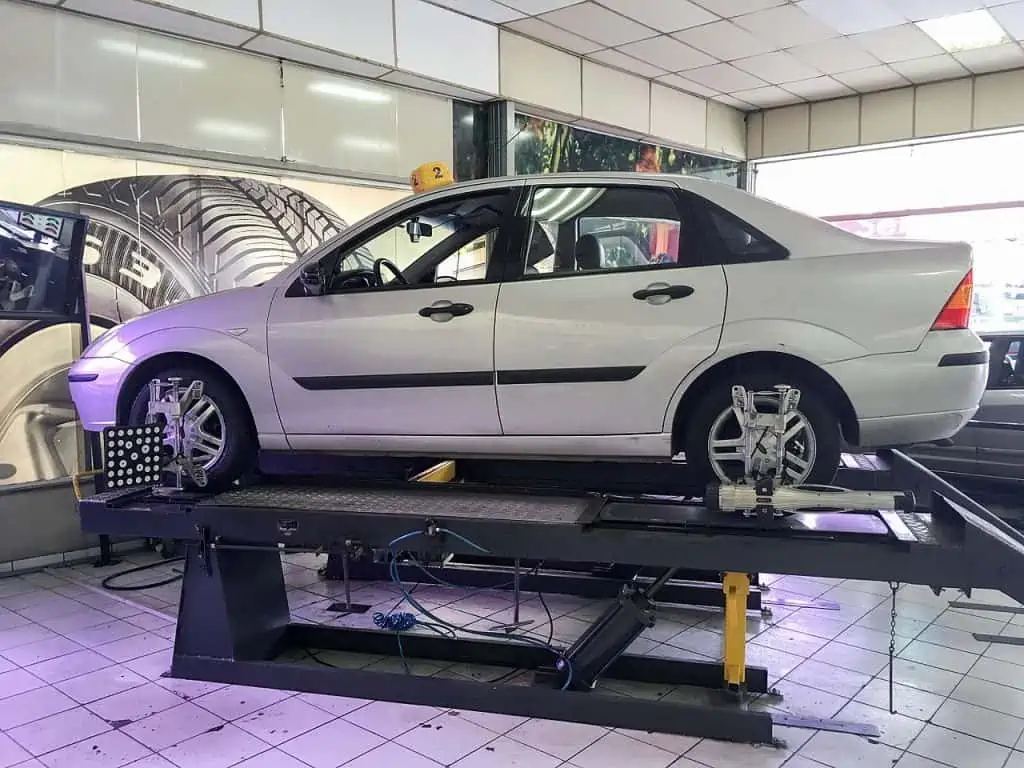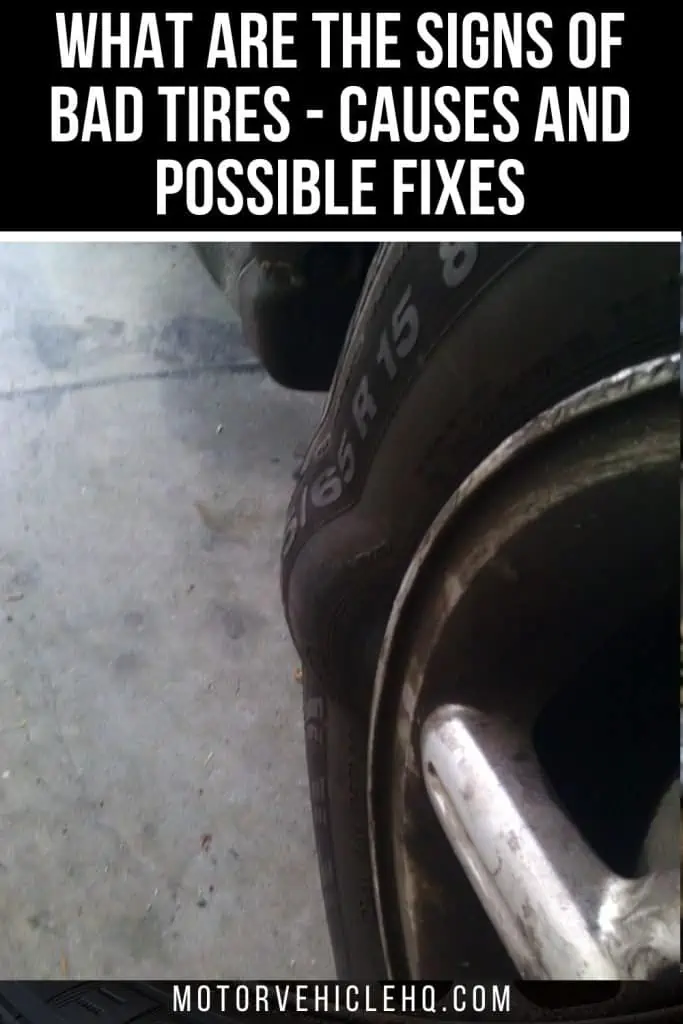Making sure your tires are in good shape is a crucial aspect of car maintenance. Poor tires can lead to a variety of issues, including poor fuel efficiency and loss of control when driving. This post will go through the signs and causes of worn tires as well as how to determine whether you need new ones.
Your car may have several common car problems as a result of having bad tires, including poor fuel efficiency, difficult steering, and greater wear and tear on other elements of the car. Wear in the tread, splits or cracks in the sidewall, and bulges or blisters on the tire’s surface are some common indications of worn tires.
Every driver’s worst nightmare is having bad tires. There is a possibility of accidents in addition to a harsh driving experience. You should be aware of the signs of worn tires to be on the safe side. The problem typically begins modestly and worsens over time.
Dealing with the tire issue while it is still solvable is advised. You can spend a lot of costs if the issue gets out of hand. Tire problems can range from low tire pressure to a suspension system defect, like a damaged ball joint.
The tires on your vehicle take a battering every time you drive, just like your feet get uncomfortable after a long walk. This is not, generally speaking, a symptom of poor driving but rather an unavoidable reality. Tires age and become worn out.
You want to be aware of when your tires are in poor condition so you can get new ones before something goes wrong because a tire failure, while you’re driving, can be catastrophic, sending your car careening off the road or leaving you stranded in the middle of nowhere without any easy way to get home.
Naturally, if you have a technician check out your car regularly, he or she would probably let you know if the tires need to be changed, but there are a few things you can do on your own to ensure your tires are in good condition without visiting your nearby auto center.
To assist you in dealing with a bad wheel as soon as possible, we shall demonstrate some telltale symptoms.
Flat vehicle tire by Stian Martinsen / CC BY-SA 4.0. Another thing to look out for is the signs of flat tires. Flat tires’ worn-out treads prevent them from providing the necessary traction on the road.
What Makes Tires? What Materials Do They Consist Of?
Tires are rubber discs that lie below the wheels of your car and act as a cushion and traction between the road and the car. To make them sturdy and long-lasting, they are composed of rubber, both natural and synthetic, which has been vulcanized using heat and chemicals. Tire treads are grooves or patterns carved onto the surface of the tire to provide grip under various driving situations.
Passenger vehicle tires, light truck tires, and off-road tires are the three primary categories of tires. Sedans, coupes, vans, and small SUVs can all use passenger car tires. Larger SUVs, pickup trucks, and vans are designed to use light truck tires. Trucks and SUVs that will be driven off-road are designed to use off-road tires.
What Makes Good Tires Important for Your Vehicle?
The suspension system of your car depends heavily on the tires. Every year, 11,000 car accidents are caused by worn-out tires. More than 200 individuals pass away in these tire-related collisions, according to the National Highway Traffic Safety Administration (NHTSA).
The contact patch, or area of the tire that is in contact with the road, is provided by the tires. Your car’s handling is influenced by the contact patch’s size and form. Your car needs to have decent tires for several reasons.
First and foremost, safe driving depends on your tires’ ability to provide the necessary traction between your vehicle and the road. Second, by lowering rolling resistance, properly maintained tires can contribute to increased fuel efficiency. A portion of the shock from road imperfections is also absorbed by tires. In an emergency, having good tires can help you stop swiftly and safely.
They can also assist you in keeping control of your car in bad weather. In a nutshell, safe driving depends on having good tires. Finally, by decreasing wear and tear on other parts of your car, including the suspension and engine, good tires can help increase the lifespan of your car as a whole.
What are the Signs of Bad Tires?
Rubber, steel, and polyester bands are layered in the production of modern tires. One of these layers may start to deteriorate and cause issues as it ages. To determine whether your tires are in bad shape or not, you should be on the lookout for several crucial indicators, such as vibration, noise, wobbling, and poor wet traction.
Some of the warning signals for a damaged tire are highlighted here.
1. Bad Experience When Driving
There are numerous ways that tire failure might manifest in your car. You will initially have a difficult time driving. Vibration from worn tires can make a car appear unsteady and unstable when driving. Deflated tires or a puncture could be the issue. Stop the vehicle as soon as you notice such a problem and make an effort to identify its cause.
In severe cases, the afflicted tires will emit smoke or a burning odor. You might discover that they have outlived their usefulness in such a circumstance. The rational response is to swap them out. When rolling on the wheels, you might have a screw-in tire if you hear a distant thud.
However, depending on how you drive, the car can appear to be slanting. One sign of imbalanced tires or a puncture is slanting. Do not operate a vehicle that looks to be leaning for your safety. Steering trouble is another indicator of this problem. It also serves as a sign of imbalance.
2. Noise During Driving
Driving noises could be a sign of malfunctioning wheel components. Many individuals mistake engine noises for faulty tire symptoms. If you think the pitch is high or sounds more grating or grinding, you must pay great attention.
Tire bubble by Osnetwork / CC BY-SA 3.0. When a tire is overinflated, the air inside it expands, putting pressure on the sides of the tire. The sidewalls may push outward as a result, creating the appearance of a bubble.
A CV joint will make more of a clicking and clunking noise. As you accelerate or brake, the sounds become louder.
3. Poor Tire Appearance
You physically examine the tires to determine their condition based on their look. Every time you drive, you should check them to make sure nothing unexpected has happened. Let’s take a closer look at a few different factors to keep the physical condition of the tire in mind.
4. Wear Patterns In Tires
Examine the tire wear pattern first. This auto component degrades quickly because it comes into contact with the road. You can get a hint of the underlying issue from the pattern. It will be simple to resolve. For instance, it is a sign of over-inflation if it wears in the middle. Underinflated tires will show side wear patterns.
5. Flat Tires
The indications of bald tires are another thing to watch out for. Bald tires lack the necessary traction on the road due to their worn-out treads. Verify the tread’s condition by looking at it. To determine whether you need new tires or should choose to retread, you can use the coin test. You place the coin with the tails facing up for this test. You need new tires if you can see the head from the edges.
Poor braking is another indication of baldness. Friction is used in braking to stop the car. Braking will be difficult without treads, especially on slick surfaces.
6. Availability of Visible Weak Spots
Bulges or blisters are the visible signs of weak areas. Due to their extreme sensitivity, these regions are prone to rupture in the event of excessive pressure or force.
7. Tire Pressure Sensor Warnings
Your vehicle will feature a tire pressure sensor if it was made in 2008 or later. Any variations in tire pressure will be detected by this sensor, and you will be alerted on the dashboard. If the sensor alerts you, it is wise to check your pressure to provide a smooth driving experience.
8. Poor Fuel Efficiency
Tire wear can harm how efficiently your car uses fuel. The wheels will need more power from the engine, which means more gasoline will be consumed. Poor fuel economy may be caused by a variety of factors, but don’t forget about the wheels.
9. Suspension System Problems
A worn tire can have an impact on the suspension system and other supporting parts. The strain brought on by the imbalance is mostly to blame. Wheel bearing issues, noise, and vibrations are symptoms of the issues. Sometimes, malfunctioning suspension components, such as worn shocks and struts, might cause the wheel to fail. You can distinguish between bad and good tires by looking at the warning flags given.
10. Tire Wobbles
The most evident tire warning symptom is wobbling. You can physically feel the car wobble up and down when it is only happening at low speeds, and the steering wheel may also start to wiggle. The internal belts’ significant separation is to blame for this. The compressed air only applies pressure to the rubber tread when the belts split so drastically. The resultant huge bubble on the tread is what causes the tread to wobble.
Tire showing uneven tread wear by CZmarlin. Tire treads are grooves or patterns etched into the tire’s surface that increase traction in a variety of driving circumstances.
11. Poor Traction
Another indication of bad tires is a lack of traction in the rain. The lack of tire grooves due to the tread wearing out is what causes the loss of wet traction. The purpose of these grooves is to allow water on the road to drain off the tread. Hydroplaning happens when the water is unable to move. When a tire hydroplanes, it lifts off the pavement and loses all traction due to the water. The tire(s) need to be replaced at this time.
What Could Lead to Early Tire Wear?
Premature tire wear can be caused by several things. Among them are:
1. The Unbalanced Tires
Your tires may begin to wear out sooner if they are unbalanced. A tire that is out of balance may bounce around when it revolutions on the pavement. The increased tension caused by this bouncing causes the tire to prematurely wear out. It’s critical to have your tires balanced regularly to assist prolong your life.
2. Driving While Tires are Underinflated
Low tire pressure while driving can hasten tire deterioration. Tires might bend more than they are intended to when they are not properly filled. This additional flexing might shorten the tire’s lifespan by causing the tread and sidewall to deteriorate more quickly. Low tire pressure can also harm handling and fuel efficiency.
3. Too Much Inflation of Tires
Early tire wear might result from overinflation. Premature wear results from riding in the middle of the tread rather than the sides of the tire due to overinflation. The tire is also more vulnerable to damage, including punctures. For these reasons, it’s crucial to always have the right tire pressure.
4. Wheel Misalignment
There are various ways that poor alignment might result in early tire wear. First, it may result in uneven tread wear, with certain tire sections degrading more quickly than others. This increases the risk of blowouts and other issues by causing premature balding and uneven tread depth.
Second, misalignment can hasten the deterioration of the tire sidewalls. This could make the tire’s structure weaker and increase the likelihood of an unexpected failure. Last but not least, misalignment might hasten the premature aging of the wheel bearings. This could result in a bumpy ride and more vibration, which would further harm the tires.
5. Suspension Problems
The tires will wear out prematurely and unevenly if your suspension is not properly tuned. This is so because the suspension has an impact on the tire’s contact patch or the portion of the tire that touches the ground. The tire will wear down unevenly if the contact patch is not consistent.
The tires may also scrub against the road surface if your suspension is not properly adjusted, which contributes to premature tire wear. Last but not least, if your suspension is malfunctioning, it may cause your tires to lose traction and slide on slippery or wet roads, which may result in a loss of control and an accident.
Automotive tires showing a variety of tread patterns by HopsonRoad (Stephen Flanders) / CC BY-SA 4.0. Every brand and type of tire has a different tread pattern, which has an impact on how effectively it sticks to the ground. Their interaction is less successful when your car has two different tire types.
It is crucial to ensure that your suspension is in good functioning order because all of these elements can cause early tire wear.
6. Poor Driving Practices
Bad driving habits are one of the leading causes of premature tire wear. For instance, your tires will develop a wear bar more quickly if you repeatedly bang on the brakes or make sharp corners. Additionally, if you travel on unpaved or bumpy roads, your tires may suffer damage and degrade more quickly.
Additionally, your tires will begin to show indications of wear and tear far earlier than they should if you don’t rotate and align them regularly. You can help extend the life of your tires and keep them looking and operating at their best by adhering to a few easy tips.
7. Using Incompatible Tires
Did you realize that something as seemingly harmless as driving with the wrong tires on can hasten the wear of your tires? Having a spare tire or two tires of different types on your car may not seem like a huge concern, but it can lead to issues in the future.
For starters, having the wrong tires might affect how your vehicle handles. Additionally, they can cause your vehicle to sway and uneven tire wear. As a result, you will need to replace your tires more frequently than you would if they were all of the same make and model.
The method that each tire is made has something to do with it. Tires come in a variety of brands and models, and each has a unique tread pattern that affects how well it grips the ground. When your car has two different tire kinds, their interaction isn’t as effective as it may be.
8. Tire Old Age
Have you ever had your tires replaced? It’s a good idea to replace your vehicle’s tires at the prescribed interval, even if you aren’t having any issues. Tires should be replaced between five and ten years after being initially installed, though the manufacturer-specific replacement intervals may differ. (You should also change your spare tires in addition to your entire set.)
The production date can be found on the sidewall of your tires if you’re unsure about their age. The Department of Transportation (DOT) issues the four-digit code, which is located at the end of the list of identification numbers; the first two digits represent the week the tire was manufactured, and the last two digits represent the year. For instance, a tire with the four-digit number “1019” was produced during the tenth week of the current year.
How to Determine Whether You Need New Tires
There are several techniques to determine whether you need new tires. However, these methods can be broadly categorized into three groups: tire depth testing, visual inspection, and hardness testing. Let’s examine both more closely:
A. Visual Examination
Several things might be seen when visually inspecting a tire, but in general, you are looking for any physical damage to the tire.
Tire showing weather-cracking by Griffinstorm / CC BY-SA 4.0. If your tires have cracks and gouges, it could be time to replace them. The bulk of the time, the sidewalls of the tire are damaged by road debris or other objects that come into touch with it.
- Flat Tires
There is almost any tread left on bald tires because of their extreme wear. You must change such tires since they might pose several safety risks. For example, bald tires can make it harder to operate your car, especially in slick or slippery circumstances. The majority of experts concur that blade tires and wear bars are indicators that it’s time to replace your current tires.
- Unbalanced Tread Wear
The tread on one or more tires begins to wear out more quickly than the others, a phenomenon known as uneven tire wear. Numerous things, including incorrect tire pressure, misalignment, and even simply driving on bumpy roads, can result in wear patterns. Such worn-out tires must be replaced.
- Bubbles on the Tire Tread
The air inside a tire expands when it is overinflated, applying pressure on the tire’s sides. This may cause the sidewalls to protrude outward, giving the impression of a bubble. Incorrect mounting, low tire pressure, or even simply getting older can all result in bubbles. Tire tread bubbles can degrade the tire’s construction and create blowouts or other issues in the future, regardless of the cause. Therefore, if you see any bubbles, it is better to replace your tires.
- Cupping of Tires
The development of tiny, elevated regions on a tire’s surface is known as tire cupping. The ride may be bumpy and tire wear may be uneven due to these raised sections, or “cups.” It is important to change your tires as soon as possible if you notice cups forming on them.
- Sidewall Cracks and Gouges
Cracks and gouges may indicate that it’s time to replace your tires. The majority of the time, road debris or other things that come into contact with the tire cause cracks and gouges in the sidewalls of the tire. These can harm the sidewall, resulting in a loss of air pressure and a reduction in the tire’s grip on the pavement.
- Tire Cords are Visible
Tire cords are the steel or other material reinforcing strands that give the tire its sturdiness. When tire cords are visible, the tread has become so worn out that the cords are now clearly visible. This poses a risk because it’s simple to destroy the cables and cause a rupture. Such tires should be replaced right away.
B. Test of Tire Tread Depth
The distance between the top of the tread and the bottom of the tire’s deepest grooves is known as the tread depth. Your tires’ tread depth is crucial because it affects how well they can grip the ground and withstand wear.
Put the probe into the lowest point of the tread groove using a tire tread depth measure. Read the measurement on the gauge and contrast it with the manufacturer’s suggested tread depth or the minimum legal limit. It is advised that tires have a minimum tread depth of 2/32′′ to ensure the best tire performance and safety. You must replace the tire if the reading falls below the threshold.
A tire tread depth test can be done in a few different methods. Utilizing a tire tread depth gauge, a device that gauges the width of the tread grooves is one method. Alternatively, you can do a penny tread depth test by placing a penny with Abraham Lincoln’s head downward (or another coin with a comparable diameter) into the tread groove and seeing whether more than half of the coin enters the tread. If it occurs, a new tire must be purchased.
One of the main factors contributing to premature tire wear is poor driving practices. For instance, if you frequently slam on the brakes or take fast turns, your tires will develop a wear bar more quickly.
C. Test for Tire Hardness
My particular favorite is this one. A hardness test can never be erroneous, although visual inspection and tread depth measurement can both be flawed. Pressing down on the tread with your thumb is the ideal approach to determine how hard your tires are. Your tires are undoubtedly hard and you could need to replace them if the tread feels hard.
How Much Does a New Tire Replacement Cost?
As you drive your car, the tires are vulnerable to wear and tear. They will eventually require replacement as time passes. You might be curious about the price of new tires as you shop.
The type of tire you require and the size of the tire are two aspects that will affect the cost of new tires. However, in general, you may anticipate spending between $50 and $200 for each tire when having all four of your car’s tires replaced. Of course, if you only need to repair one or two tires, the cost will be lower.
It’s crucial to know the size, speed rating, and load capacity you require before going tire shopping. To choose the best tire tread pattern for you, you should also take into account the type of driving you perform most frequently.
Before making a purchase, it is crucial to compare pricing at several retailers. If you are on a tight budget, you might also want to think about buying secondhand tires. Just make sure to properly inspect the tires to make sure they are in good condition before buying.
What Is the Tyres’ Average Lifespan?
Normally, tires last from 25,000 to 50,000 miles. However, this is dependent on several variables, such as the type of tire, how well they are maintained, and the conditions under which they are driven. In the end, the best way to determine how long your tires should last is to consult your owner’s manual or a professional.
Do You Need to Replace All Four Tires At Once?
It is always advisable to replace all four tires at once because mismatched tires can lead to early tire wear. This will ensure that the tread of the tire wears uniformly and that they are all the same brand and model.
Try to purchase at least two matching sets of tires if you can’t afford to replace all four. If you do have mismatched tires, make sure you rotate them frequently to ensure even wear.
Can You Fix a Bad Tire on Your Own?
Most of the time, sure. To be certain, it’s crucial to refer to your owner’s handbook or a specialist. A tire repair kit, which is available at the majority of auto parts retailers, may typically be used to perform simple repairs. Usually, these kits include everything you need to patch up a hole, including adhesive and a patch. You might need to take the tire to a professional for repair or replacement if the failure is more severe.
Wheel alignment by Mike Peel / CC BY-SA 4.0. Early tire wear may be the result of poor wheel alignment. Certain tire parts may deteriorate more quickly than others, leading to uneven tread wear.
The Conclusion
In conclusion, it’s crucial to have decent tires on your car for several reasons. A car’s tires are crucial for maintaining traction and can also aid with fuel efficiency and vehicle longevity. It is crucial to have your tires inspected by a professional if you are noticing any of the above-mentioned problematic tire symptoms.
If you take care of and maintain your new tires properly, they should last for several years. To remain on the safe side, check the tread frequently, and be ready to replace them when necessary. You can contribute to ensuring your safety on the road by doing this.
Your car’s tires are an essential component, therefore there is cause for concern if they are damaged. The issue arises when you are unable to determine whether your tires are damaged.
We help you out by giving you information on the warning signs and symptoms of worn tires. Review the various suggestions for fixing worn-out wheels to better understand the issue and address it sooner. Don’t forget to check the tires frequently to see if they need to be repaired.

Tire bubble by Osnetwork / CC BY-SA 3.0

Jim Wicks is the founder of MotorVehicleHQ. With over two decades of experience in the automotive industry and a degree in Automotive Technology, Jim is a certified car expert who has worked in various roles ranging from a mechanic, car dealership manager, to a racing car driver. He has owned more than 20 cars over the past 15 years. Ask him about any vehicle you see on the road and he can tell you the make, model and year. He loves the aesthetics of all things cars, and keeps his vehicles in pristine condition.
In his free time, Jim enjoys getting his hands dirty under the hood of a classic car or taking long drives along the country roads. His favorite car? A 1967 Shelby GT500, a true classic that, according to Jim, “represents the pure essence of American muscle.”
